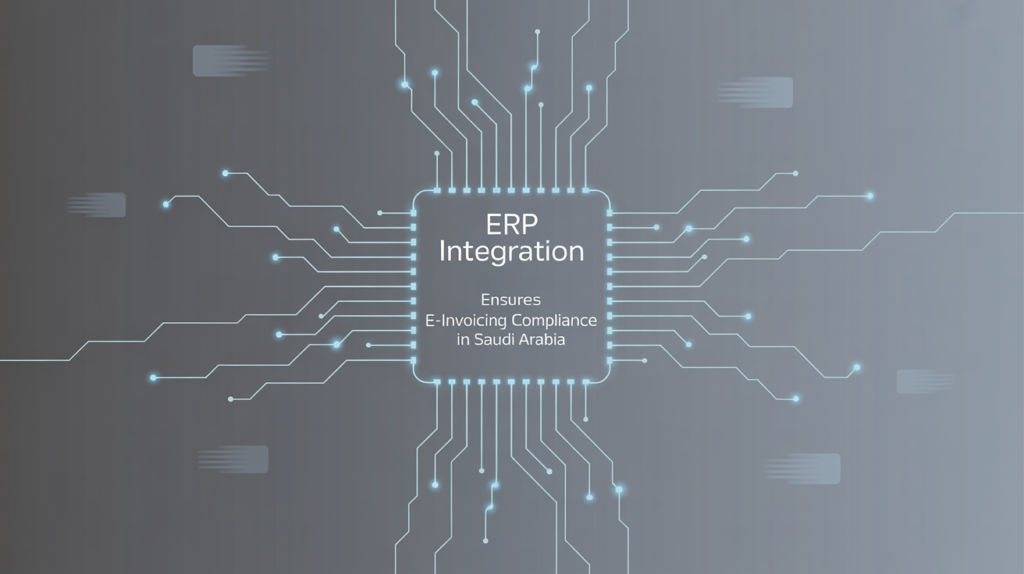The e-invoicing ZATCA (Zakat, Tax and Customs Authority) Phase 2, which is one of the most daring moves towards digitalization, is a significant step in Saudi Arabia. It is referred to as the Integration Phase and is the logical continuation of the successful implementation of Phase 1 (the Generation Phase), the purpose of which is to further enroot control, transparency, and on-line compliance in the tax ecosystem of the Kingdom.
To businesses, it is not just about sending digital invoices but to connect their systems with ZATCA platform in a controlled and regulated approach. That is where ERP (Enterprise Resource Planning) systems come in. A well-developed best erp in saudi arabia would not only make the transition easier but also fully compliant with the constantly changing ZATCA requirements.
The knowledge of ZATCA Phase 2:
ZATCA Phase 2, announced in January 2023 and implemented in phases, obliges businesses to connect their invoicing system with the FATOORA platform of ZATCA. It mandates:
- Electronic invoice generation with cryptographic stamps
- Real-time or near-real-time data transmission to ZATCA
- Invoice clearance or reporting, depending on the type
- Adherence to a specified XML format with UUID and QR codes
- Use of compliant technical solutions for integration
The first phase will be to target businesses with a turnover of over SAR 3 billion each year and then the other groups will be targeted later on.
The Importance of ERP Integration during ZATCA Phase 2:
In this very regimented compliance landscape, an informal or semi-automated system is no longer adequate. The following is how ERP integration makes businesses compliant:
1. Real Time Invoice Clearance and Validation:
Real-time e-invoice generation, submission, and validation is possible with ERP software that is integrated with ZATCA APIs. This is to make sure that all the B2B and B2G transactions are in accordance to the rules of clearance such as invoice formats, digital signatures and encryption.
Lack of ERP integration would subject businesses to delays, rejections or fines in case of mismatch or human error.
2. Automatic XML format generation:
According to ZATCA e-invoices should be in a particular XML schema. The regular invoice data can be automatically transformed into the necessary XML structure with UUIDs, QR codes, timestamps, etc. by an ERP system, and all invoices can be created to comply with the digital requirements without any further actions.
3. Safe Data Exchange with ZATCA:
ERP solutions will assist in encrypted communication, which will allow secure delivery of invoice information to Zatca e-invoicing Saudi Arabia. They process the required cryptographic stamps and public/private key management, protecting businesses against possible data violations or non-compliance.
4. End to end audit trails:
ERP systems have in-built audit logs that enable a business to monitor the creation of invoices, the editing, submitting, and approval of invoices. This openness does not only meet the compliance with ZATCA but also makes internal auditing and financial management easier.
5. Cross Departmental Integration:
The issue of e-invoicing compliance cannot be only the task of IT, but also of operations, finance and even sales. A homogenous ERP system will make every department in line, thus eliminating communication holes and wastage of time.
ERP platforms present a single source of truth whether in the form of purchase orders, payment follow-ups, or tax filing.
6. Effective Error Response and Notifications:
With ERP systems, real-time alerts are provided in case of invoice failure to validate or submit. This enables companies to take corrective measures in real time, hence reducing interference and smooth running of businesses.
7. Future-Readiness and Scale:
The digital plans of ZATCA are included in the Vision 2030 of Saudi Arabia. In embracing a scalable ERP system today, businesses can be ready not only to meet the existing regulations but also to encounter future stages of e-invoicing, improved analytics, and even AI-powered auditing.
What to Look for in a ZATCA-Compliant ERP System:
If you’re planning to adopt or upgrade your ERP solution for ZATCA Phase 2, ensure it offers:
- Pre-built ZATCA integration modules
- XML invoice generation and validation tools
- Cryptographic compliance (UUID, signatures, QR code)
- Cloud-based access and real-time syncing
- Automatic updates based on ZATCA’s guidelines
- Comprehensive reporting and dashboards
Final Thoughts: ERP is No Longer Optional:
ERP integration is no longer a nice-to-have with ZATCA Phase 2 being in force. An ERP system with a well-integrated system does away with guesses, simplifies operations and makes sure that you fulfill all the requirements of the authority.
With the compliance shifting to being platform-driven, your ERP is your first line of defense and your most intelligent investment in making sustainable growth in the digital economy of Saudi Arabia.
Waiting until you are penalized is not the way to go, integrate, automate, and be compliant.


